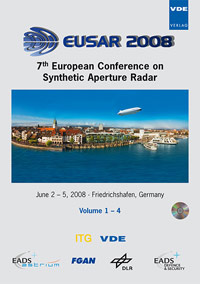CoReH2O – A Ku- and X-Band SAR Mission for Snow and Ice Monitoring
Konferenz: EUSAR 2008 - 7th European Conference on Synthetic Aperture Radar
02.06.2008 - 05.06.2008 in Friedrichshafen, Germany
Tagungsband: EUSAR 2008
Seiten: 4Sprache: EnglischTyp: PDF
Persönliche VDE-Mitglieder erhalten auf diesen Artikel 10% Rabatt
Autoren:
Rott, Helmut (Institute for Meteorology and Geophysics, University of Innsbruck, Austria)
Cline, Don (NOAA-NOHRSC, Chanhassen, MN, USA)
Duguay, Claude (University of Waterloo, Canada)
Essery, Richard (University of Edinburgh, UK)
Haas, Christian (Alfred-Wegener-Institut, Bremerhaven, Germany)
Haas, Christian (University of Alberta, Canada)
Macelloni, Giovanni (IFAC-CNR, Firenze, Italy)
Malnes, Eirik (NORUT, Tromsö, Norway)
Pulliainen, Jouni (FMI, Helsinki, Finland)
Rebhan, Helge (ESA-ESTEC, Noordwijk, Netherlands)
Yueh, Simon (JPL-CalTech, Pasadena, CA, USA)
Inhalt:
The COld REgions Hydrology High-resolution Observatory (CoReH2O) satellite mission has been selected by the ESA for scientific and technical studies within the Earth Explorer Programme. The mission addresses major gaps in present snow and ice observations. Improved, spatially detailed measurements of snow and ice properties are needed to advance the understanding of the role of the cryosphere in the climate system and to improve the knowledge and prediction of water cycle variability and changes. Basic measurements of CoReH2O will include extent, water equivalent and melting state of the seasonal snow cover, snow accumulation and diagenetic facies of glaciers, permafrost features, and sea ice types. The proposed sensor is a dual frequency SAR, operating at 17 GHz and 9.6 GHz, VV and VH polarizations. The dual frequency, dual polarization approach enables the decomposition of the scattering signal for retrieving physical properties of snow and ice. Scientific preparation activities include experimental campaigns with in situ and airborne scatterometers, improvement of radar backscatter models, the analysis of satellite data from Ku-band scatterometers and X-band SAR, and the development of retrieval algorithms for snow and ice parameters.


